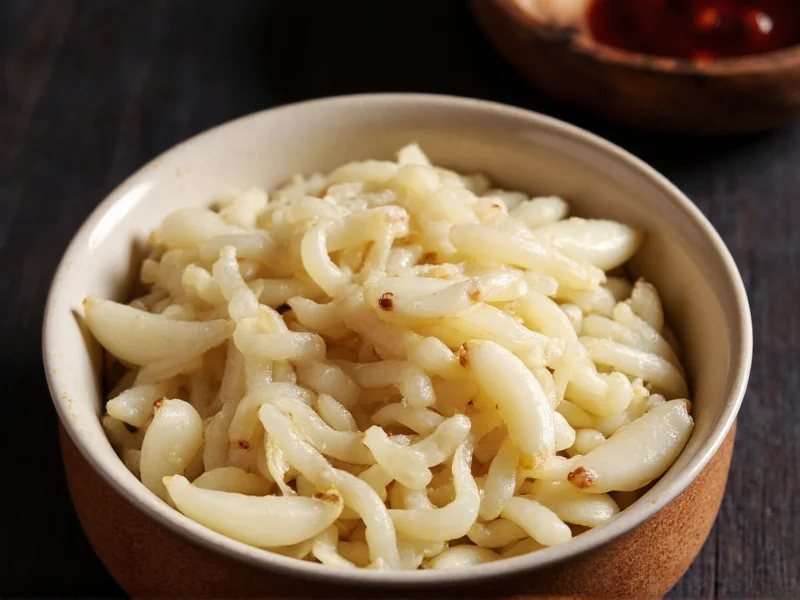Understanding whether garlic qualifies as umami requires examining its biochemical composition and how heat transforms its flavor profile. While garlic isn't classified among the primary umami powerhouses like aged cheeses or soy sauce, its contribution to savory complexity in cooking is scientifically significant. The key lies in allicin and other organosulfur compounds that develop glutamate-like properties when subjected to thermal processing.
The Science Behind Garlic's Umami Properties
Raw garlic contains alliin, an odorless compound that converts to allicin when crushed or chopped. During cooking, these sulfur compounds undergo Maillard reactions and thermal degradation, producing molecules that stimulate umami receptors. Research published in the Journal of Agricultural and Food Chemistry confirms that roasted garlic develops measurable glutamate levels—approximately 40-60 mg per 100g—comparable to some vegetables though substantially less than kombu (1,000+ mg/100g).
Cooking Methods That Enhance Garlic's Umami
The preparation technique dramatically affects garlic's savory potential:
| Cooking Method | Umami Impact | Scientific Explanation |
|---|---|---|
| Raw | Minimal umami | Allicin dominates; primarily pungent rather than savory |
| Roasted (375°F/190°C) | High umami development | Thermal breakdown creates new sulfur compounds that activate umami receptors |
| Fried (medium heat) | Moderate umami | Controlled browning develops savory notes without bitterness |
| Aged (black garlic) | Maximum umami | Fermentation produces complex glutamates and ribonucleotides |
Garlic vs. Classic Umami Sources
While garlic contributes to umami perception, it functions differently than traditional umami ingredients. Unlike mushrooms or tomatoes that contain abundant free glutamate, garlic's umami effect comes primarily from synergistic interactions. When combined with glutamate-rich ingredients, garlic's sulfur compounds enhance the overall savory perception through receptor amplification—a phenomenon documented in Flavour Journal research.
Chefs leverage this property in techniques like soffritto (Italian base of onions, carrots, celery) where garlic's transformed compounds multiply the umami impact of tomatoes or Parmesan. This explains why "does roasted garlic have umami" is such a common culinary question—the browning process fundamentally alters its flavor chemistry.
Practical Applications in Cooking
To maximize garlic's umami contribution:
- Roast whole bulbs at 375°F until caramelized for sweet, savory depth
- Combine with tomato-based sauces where sulfur compounds enhance glutamate perception
- Use black garlic as a umami booster in dressings and marinades
- Avoid high-heat frying which creates bitter compounds that mask savory notes
Professional kitchens often employ the "garlic umami flavor profile" concept when building layered flavors. The compound diallyl disulfide, prominent in cooked garlic, interacts with inosinate in meats to create synergistic umami effects—making it invaluable in braises and stews where "how to enhance umami with garlic" becomes critical.
Common Misconceptions
Many confuse garlic's pungency with umami. While raw garlic's sharpness comes from allicin (a thiosulfinate), true umami develops only through thermal or enzymatic transformation. This explains why "is garlic considered umami" generates debate—its classification depends entirely on preparation method. Black garlic represents the umami pinnacle, with fermentation producing up to 10 times more glutamate than raw cloves.
Conclusion
Garlic's umami contribution exists on a spectrum determined by preparation. While not a primary umami source like dried shiitakes or aged parmesan, properly cooked garlic significantly enhances savory depth through both direct glutamate production and receptor synergy. Understanding "garlic vs mushrooms umami content" helps chefs strategically deploy each ingredient—mushrooms for direct glutamate impact, garlic for flavor amplification. This biochemical interplay makes garlic an indispensable tool for creating complex, satisfying dishes where umami perception matters most.
Does roasted garlic have more umami than raw garlic?
Yes, roasting dramatically increases garlic's umami properties. The Maillard reaction during roasting transforms sulfur compounds into new molecules that activate umami receptors. Roasted garlic contains measurable glutamate levels (40-60 mg/100g) compared to negligible amounts in raw garlic, creating a noticeably sweeter, more savory profile.
How does black garlic compare to regular garlic for umami?
Black garlic contains significantly more umami compounds than regular garlic. The fermentation process (4-6 weeks at 140°F/60°C) breaks down proteins into free glutamate, increasing levels up to 10 times higher than raw garlic. Its complex flavor profile includes notes of tamarind and balsamic with pronounced umami depth, making it a powerful natural flavor enhancer.
Can garlic replace umami-rich ingredients in recipes?
Garlic enhances but doesn't replace primary umami sources. While cooked garlic contributes savory depth, it lacks the concentrated glutamate levels found in ingredients like soy sauce (1,300 mg/100g) or kombu (1,000+ mg/100g). For maximum effect, combine garlic with traditional umami sources where its sulfur compounds amplify the overall savory perception through receptor synergy.
Why does garlic make food taste more savory?
Garlic's sulfur compounds interact with umami receptors and enhance glutamate perception. When cooked, compounds like diallyl disulfide bind to taste receptors, creating a synergistic effect that amplifies savory flavors. This biochemical interaction explains why "how to enhance umami with garlic" is a fundamental technique in professional cooking, particularly in tomato-based sauces and meat braises.











 浙公网安备
33010002000092号
浙公网安备
33010002000092号 浙B2-20120091-4
浙B2-20120091-4